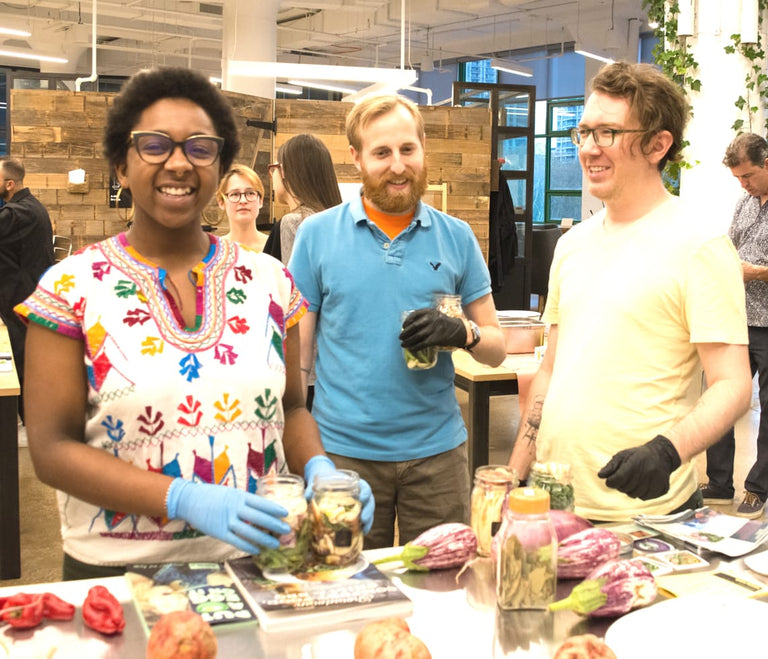Addressing America's Broken Food System in the Midst of COVID-19

In the United States, our industrial food system is a broken one, but with the recent outbreak of COVID-19, its cracks are beginning to show more than ever. In times like these, we are faced with the reminder that small farms and local food systems are invaluable assets to all of our communities, and there are no substitutes equipped to satisfy the roles they play.
As agriculturalists have made clear, the farming industry is not the folklorish trade that American consumerism has made it out to be, and difficulties like farmers’ common inability to set their own prices have caused many of their business models to suffer at the hands of large corporate buyers. This month, Kansas farmer Scott Blubaugh told CNN, “the virus has really exposed the flaws of our food system, and how vulnerable it is,” admitting corporate control and lack of government intervention have hurt his and other farms nationwide. Unfortunately, these hardships are far from new. In 2017, the Economic Times released an article outlining the alarming weight of this dilemma, revealing that subsidies and other federal measures have done little to alleviate farmers’ struggle to attain fair prices for their products. Still just as prevalent as it was then, these long-standing issues have now magnified into full-fledged catastrophe for large-scale agricultural enterprises like Scott’s.
The pandemic has also generated distribution problems resulting in devastating amounts of food waste across the country. The New York Times reported that many dairy farmers have been dumping thousands of gallons of milk into lagoons and manure pits, while desperate vegetable producers have been digging trenches and filling them with high-volumes of unsellable produce. One estimate from the nation’s largest dairy cooperative, Dairy Farmers of America, suggests farmers have been dumping as many as 3.7 million gallons of milk a day and smashing 750,000 unhatched eggs per week. These drastic measures are the result of financial difficulties in harvesting, processing and transporting of goods which is as much an international issue as it is a domestic one. Exporting is not possible either, according to farmers, due to recent fluctuations in currency rates. Thankfully, many food banks and even a few corporations have stepped up to help reduce this squandering, bridging the gap between agricultural surpluses and communities in need. But limited storage space and refrigeration has made even these reparative measures imperfect as grocery store scarcities continue to rise in many states.
Meat shortages in particular have grown from deficits of mild-concern to developing seriousness in a matter of weeks. Conventional meat processors have found that close contact on shoulder-to-shoulder assembly lines has facilitated the spread of the virus. As a result, these facilities are now grappling with unemployment and short-staffing. In response, many businesses have taken on more and more drastic measures as many plants have begun to close down. However, on Tuesday, President Trump released an executive order urging meat plants to remain open despite increasingly poor work conditions. His decision has been met with much criticism as more than 3,000 industrial meat production workers have been diagnosed with the virus, and at least 17 workers have died, according to the Boston Globe.
Moreover, in the wake of restrictions which have left most restaurants closed, large-scale farmers have found it almost impossible to adjust their business models fast enough to keep up with the changing market. Before the pandemic, large farmers relied heavily on consistent high-volume purchases from food-serving institutions. Now, in the aftermath of these closures, they are left with an overabundance of product and no one to sell it to. According to professor Tim Griffin, division chair of Agriculture, Food, and Environment at Tufts University, “Before, roughly half the food spending in the US was what we call away from home—restaurants, the cafe near work, those types of venues.” Now, this is no longer the case, and what Griffin and his colleagues call a “change of feeding grounds” is not an easy transition to make for large farms in particular. Less malleable than smaller local farms, these big businesses have felt the disadvantage of their size in this sense especially.
But even with the recent shift in national behavior towards dining-in, small farms have been able to adapt to these and other colossal changes thanks to their unmatched flexibility. Businesses of this scale have made strides in providing home-delivery as well as contactless pick-up services to individual buyers. Their adaptability has allowed these farmers to move to exclusively online purchases, helping them to meet the surge in consumer demand while keeping personal interactions at an all time low. One of Local Roots’ vegetable farmers, for instance, was able to quickly transform an old barn into a contactless shop where upstate New Yorkers can pick up their own boxes of produce. Adjustments like these are being made throughout the local food system. Local Roots has expanded delivery to 90% of our customers whereas pre-pandemic, these same customers opted to pick up at market locations. In a mere 48 hours, we were able to evolve our business by learning routing softwares, hiring fifteen more staff to accommodate for individual farm boxes, and figuring out how the logistics and packaging needed adjustment. Not to mention, Local Roots has donated produce to healthcare workers and restaurant workers who have been affected by the ban on food service.
However, even though small farms have demonstrated the ability to adapt to rapid changes in the market, they have been slighted in terms of federal relief. And while all farms are supposed to be covered by the USDA, aid has yet to be released. According to experts, “federal subsidies to help struggling farmers have flowed almost exclusively to large corporate farms,” often leaving them without sufficient aid. On March 27, Congress signed the Coronavirus Aid, Relief, and Economic Security (CARES) Act into law, which set aside $9.5 billion for farmers. But as many small farmers have come to find in the following weeks, no money has been allocated specifically to local farms. This oversight has left large farmers at an advantage that some say reflects this country’s “cheap food policy” that subsidizes large agriculturalists, leaving the rest to fend for themselves.
These circumstances, however unfortunate, have served to remind us how essential small farms and local systems are to the American food industry. Despite the uncertainty of these daunting times, small farmers across the nation have demonstrated the ability to adapt and it has not gone unnoticed. Consumers have shown an increased interest in the advantages of local food and small-scale agriculture systems, offering hope for the future and healing of food systems nationwide.
Written by Local Roots Volunteer Jess Santoro (@jess_santoro)
Rather have a taste first?
Local Roots Experiences are fun, pop-up events where we bring the farm to you!

Become a Harvest Club Pick Up Location
Are you a NY based cafe, bar, or neighborhood business? Become a Harvest Club pick up location and have community members come to your establishment each week to pick up their Local Roots harvest.
Top






